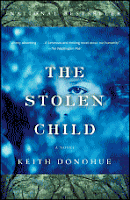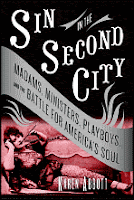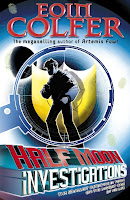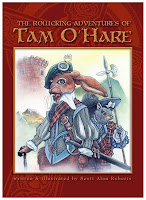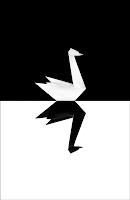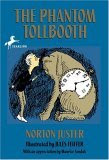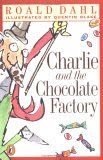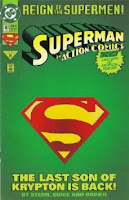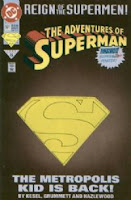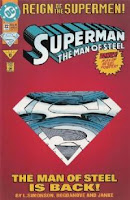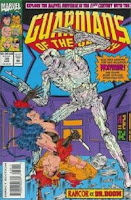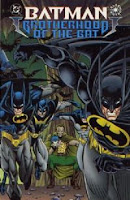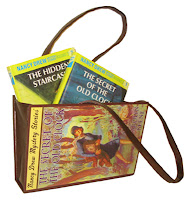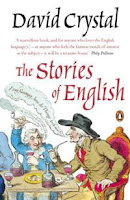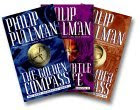Interviewed by
Melissa 
First-time author Christopher Grey has been around the block a few times. He has worked (according to his author bio) as a waiter, a hotel manager, a hospital porter, a jeans salesman, a rock musician and a tour operator, among other things. This piqued my curiosity: how does a person who has lots of life experience but no background in writing write such as engrossing a first novel as
Leonardo's Shadow?
MF: Your author bio listed a lot of jobs that you've had over the years. Which one did you enjoy most? Least?CG: I left school at seventeen. I had nobody to give me guidance and no idea what to do. But I didn't want to go to university, I wanted to live. So I drifted from job to job, if you can call that living. Early on I enjoyed being a hospital porter. My father had died not long before and I found it strangely comforting to be among the sick and dying. And nurses are wonderful people. My least favorite job was selling advertising over the phone; if there is one kind of work that will destroy any creative impulse in a young person, it is cold-calling. Don't do it, ever, if you want to become an artist. It set me back years. My soul was crushed to a fine powder.
MF: How did you decide to become a writer? Is it something you've "always" wanted to do?
CG: I don't think you ever actually decide to be a writer. The desire is either inside you or it isn't. I was writing in my teens but gave it up through lack of encouragement from school and family. I have never been very self-confident about my abilities. For many years after I failed to see the signs telling me to write, write, write. One day I had this irresistible urge to go back to school and re-educate myself. It was while I was at The New School in New York that I began to realize that I could write. That was a wonderful feeling. My only regret is that I wasted many years not doing it, because writing, like all worthwhile pursuits, takes a long, long time to become adept at.
MF: There's a very interesting story about how you came to write this book. Would you mind telling it?CG: With pleasure. Some years ago I visited Leonardo da Vinci’s painting of the Last Supper at the church of Santa Maria delle Grazie in Milan; this was before the recent restoration, and you could only see half the wall, but nonetheless it had a profound effect on me. I went away thinking and hoping that I could write something about it and Leonardo. But I couldn't get started. Well, that’s not true: actually I started hundreds of times. And stopped the same amount. The whole subject just seemed too big for me to grasp. Then a friend gave me an old copy of Leonardo’s Notebooks; inside were fragments of the great man’s thoughts, hopes, and fears. Suddenly he seemed human; a real human being who was not so different from the rest of us, except that he was a genius. Somehow I found the courage to turn this monumental personality into a character in my book. It took a lot of heavy lifting.
MF: How much research did you have to do into Leonardo da Vinci's life? Milan in the 15th Century?CG: The Notebooks gave me most of my information about LeonardoI didn't read any biographies because I wanted him to belong to me, not to another writer. I did read parts of other books about Milan (actually, there’s very little out there), and I studied contemporary maps and drawings, as well as looking at lots of Renaissance art, which is always a pleasure, even if you are meant to be working.
MF: What is it about this period of history that intrigues you?CG: The artistry, the style, the politics, the personalities but all eras have those interesting qualities to a greater or lesser extent. More than all that, the Renaissance is the crossroads between the classical and the modern: the time when men and women start to take the future into their own hands instead of leaving it up to God. It is, in effect, the dawning of the individual as a force in society. And you could say that in our time we have arrived at the late afternoon.
MF: Have you visited Italy much (I haven't, but always wanted to...)?CG: I've been a few times, but you can never visit Italy enough. (Please go. Don’t delay any longer! You must! This year, if you can!) I also lived in Bologna for six months; a pretty wonderful time in a wonderful, pretty city. Italy is a country that somehow works almost perfectly, but don't ask me why. Of course it has the beauty of the countryside, the astonishing artistic legacy, the weather, the food but above all the people seem to be happy naturally, intrinsically, without the need for outside assistance. I have no idea how to bottle that, but the rest of the western world needs a dose.
MF: What's your favorite place(s)? What is it about Italy that intrigues you?CG: Climbing the stairs and standing on the roof of Milan Cathedral among the hundreds of marble spires is an experience that is simply out of or perhaps beyond this world; on a sunny day you can see the mountains in the distance, snow-covered, majestic. It is truly awe-inspiring. (With all those spires, how could it not be?) There are so many wonderful sights in Italy, large and small bridges, churches, streets, houses, roofs, and doorways. History speaks from every stone. Even the shadows have character.
What makes Italy so special is that neither war, nor politics, nor technology, nor society’s woes will ever change her beauty and bounty. She is eternal.
MF: Is young adult fiction something you set out to write, or was it something you just fell into?
CG: I wanted to write plays. I tried to get into a famous New York drama school, and they turned me down. I was so desperate to get into a writing program and being British I needed a visa to stay in the USA and time was running out. I applied to a creative writing program at The New School. The only place they had left was in children’s writing. I took it. The story of Leonardo painting the Last Supper, which I had originally intended to be a play, became a Young Adult novel about his servant. Serendipity, I guess. Because I know that if I had persisted in writing a play it would never have been produced. Or even finished, probably.
MF: Have you considered writing for the adult market, or do you plan to keep writing for young adults?CG: My next book will be for adults. But I hope it will appeal to all ages. Then I want to go back to a story for young adults. I am not very keen on labels. The marketing people dream them up. Books are for reading. I love children’s books (if they are well written), and I think children will read books for adults providing the writing is accessible and the theme of interest to them. But we live sadly, when it comes to creative work in an age of “niche marketing.”
MF: What writers have influenced you the most?CG: William Shakespeare: for his genius with words. Saul Bellow: for his exuberance. Vladimir Nabokov: for his complexity of thought. Anton Chekhov: for his understanding of people and his lightness of touch. And about a million others: poets, playwrights, screenwriters, comic book writers, sitcom writers, greeting card writers. There’s something to learn from every artist who does the job with love and respect for the craft.
MF: Which is more difficult, writing or re-writing? How much re-writing do you do?
CG: Well, there are different difficulties at every stage of the writing process, all of them devilishly hard, I think. At the beginning you have a great idea but worry about how far it will take you; half way through you are delighted that the story has come so far, but now you worry about having the energy and ideas to finish it; and towards the end you are so tired that you want to finish it as quickly as possible (big mistake).
And then, when you are congratulating yourself on having finished your book, you start the real work: editing. And that can take as long as the writing (for an inexperienced author, anyway; there are many mistakes to learn from and pitfalls to overcome). I read somewhere that the difference between a successful writer and the other sort is knowing when to ditch a bad idea. I agree with that. If you follow the wrong path in your story you can end up in a very dark, very overgrown wood, from which there is no escape. That happens to so many inexperienced writers, and they get lost and stop. Which is a great shame, but you have to find your own way, unfortunately; no one can do it for you.
For
Leonardo’s Shadow I wrote three drafts before the book was accepted for publication; and then another four drafts for my editor (a brilliant, wonderful editor, who would not take second best). A lot of work, any way you cut it.
MF: Does anyone else read your drafts before your editor/publisher?CG: I caution against giving out work to family and friends (who, in trying to be helpful, often cause more problems) and writing peers (whose opinion is not always honest, for various reasons). But there is always someone you love whose opinion counts, and it is that person who gets to see the unfinished work. For better or worse.
MF: Do you have a favorite place to write? Any writing "rituals"?CG: All I need is a small desk in a quiet corner. But I need access to it at the same time every day, if possible. I am like a small steam train in an obscure part of the countryside: happy to go on puffing my way round the track, and always in danger of being made obsolete by more advanced models.
MF: What advice would you give an aspiring author?CG: As someone who has wasted so much time not writing because of pride, fear, envy, self-loathing, melancholy, sloth, impatience, and vanity, I would say just this: put aside all your reasons for not writing and just write. A chapter, a verse, a paragraph, a line. Even a word. Every day, day in and day out. Write. Write. WRITE. Never give up. One day it will call come together.
MF: Do you read a lot? What's your favorite book or author?CG: I try to read as much as I can. Every writer must. You could almost say that the best writers are the ones who read the most. Reading is oxygen to the writer; without it you will simply starve. I have many favorite books, but one that affects me very deeply each time I read it is Saul Bellow’s
Seize the Day.
MF: What are you currently reading?CG: Captain Alatriste by Arturo Perez-Reverte. You've probably never heard of him. He just happens to be one of the biggest-selling authors in the world, but he’s not a celebrity in the USA. I'm reading him because this is an adventure book, and I want to study his techniques. Then I am reading Don DeLillo’s
White Noise, and after that Primo Levi’s
If This is a Man.
MF: Who, or what, inspires you?CG: Everyone from my mother (for her courage) to SpongeBob SquarePants (for his ironic humor). And anyone who finds what he was meant to do in life and then does it. Also the snail, for successfully crossing a garden path against all the odds.
MF: Aside from writing, what are your pastimes? CG: When I have no money (like now) I watch endless DVDs, and go for coffee on Portobello Road to look at the locals. If I have money (two years ago), I travel; my last trip was to China and Japan, and it was marvelous.
MF: Any plans for other books?CG: My next book will be set in the Renaissance again, but will have an adult hero. A gravedigger. I want to make it thrilling, amazing, hilarious, fascinating, and unique. I even have hopes it might be quite good.
You can find more out about Christopher at his
website.


